Cleansing face gel - 100/200ml
Daily Routine with Vitamin C
Vitamin C Energy Pack
99.9% natural formulas | Antioxidants | Suitable for sensitive skin
Looking for a routine that hydrates and protects your skin with high antioxidant efficacy? This serum and cream duo with Vitamin C works in synergy from within thanks to its encapsulation technology, boosting its effectiveness by 20 times. Formulated with the highest natural source of Vitamin C and the most powerful plant-based antioxidant, they visibly transform your skin: more even and radiant every day.
Vitamin C Concentrate Serum:
- Its antioxidant power is 1,000 times greater than Coenzyme Q10
- Provides 15% more radiance to the skin
- Prevents and reduces wrinkles by 28% in 42 days
- Contains Kakadu Plum, the richest natural source of vitamin C
Vitamin C Moisturizing Cream:
- Skin 115% more hydrated
- Stimulates collagen production
- Protects against free radicals
- Contains astaxanthin, the most potent natural antioxidant available
Illuminate, seal, hydrate, and protect. This pack is designed to boost your skin's vitality with the double power of Vitamin C. While the serum penetrates the deeper layers of your epidermis, providing firmness and preventing the first expression lines, the cream enhances its antioxidant function, extending the serum's benefits and keeping your skin hydrated and protected from free radicals.
- 99.9% natural formulas
- Dermatologically tested
- Free from silicones, parabens, retinoids, and other irritating ingredients
- Suitable for sensitive skin
30 ml, 50 ml | Glass packaging | With natural fragrance
-
Apply the Vitamin C serum and cream to your face, morning and night, on completely clean and dry skin.
-
Shake the products well before use to mix their natural ingredients.
-
With the help of the dropper, apply 4 drops of the Vitamin C Concentrate Serum across your forehead, cheeks, and chin.
-
Gently spread the product over your entire face, lightly massaging to help the active ingredients penetrate deeply and for the product to be fully absorbed.
-
Next, distribute a small amount of the Vitamin C Moisturising Cream over your face and gently massage, always moving from the inside outwards.
-
TIP! Proper cleansing is essential for healthy skin. If you don't have a product that cleanses deeply without irritation, we recommend the Rose Quartz from Freshly below.
*Ingredients from organic farming
**Derived from natural essential oils

Extraction: Aloe Vera is a perennial plant native to warm climates. The gel contained in its leaves is commonly used in skin treatments due to its many beneficial properties.
Benefits: Known as an astringent, this plant also has moisturizing, regenerating, rejuvenating and antibacterial properties. These properties are perfect for revitalizing skin. It also functions as a deep cleansing agent, opening pores and eliminating toxins that cause the disruptions in the skin’s normal functioning. It also benefits the hair by restoring shine and helping to eliminate excess dandruff and scalp irritations. It is used especially effective for treating skin irritations, blemishes and acne.
Extraction: water is an element present in most cosmetic products and is the most important raw material. In the cosmetics industry, purified water is used in a process to eliminate any solid particle that may contain water in order to achieve a higher degree of purity and quality.
Benefits: water helps to cleanse the body. Hydrates and improves the effect of other active ingredients, provides softness and delays premature aging of the skin.
Extraction: it is harvested from plants (soy or coconut oil for example) by hydrolysis of fats and by fermenting sugars. Glycerol is found naturally in skin and is considered a self-healing compound.
Benefits: it is one of the many substances in the skin that helps maintain the outer barrier and prevents dryness and peeling. It leaves skin feeling nourished and works to treat acne. It also prevents the accumulation of fat and improves the appearance of hair. Vegetable glycerin can be used as a diluent and as an alcohol substitute when preparing herbal extracts.
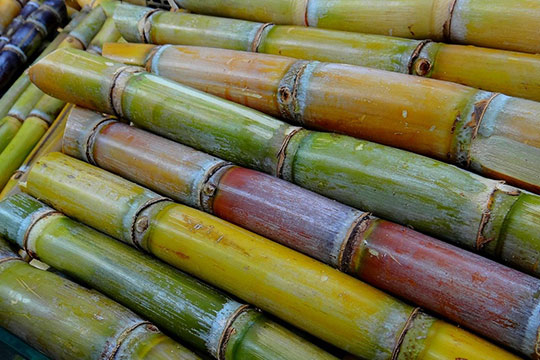
Extraction: natural pentylene glycol is obtained from renewable plant-based sources such as sugar cane or maize.
Benefits: commonly used in moisturising creams and lotions for its hydrating properties, which help retain moisture in the skin. It also has antibacterial and preservative effects, helping other active ingredients act better on the skin.
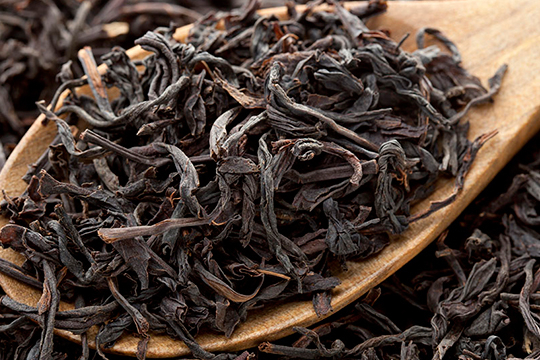
Extraction: tea is obtained by drying its leaves, then the active ingredient is extracted from the fermentation of these leaves. It is very rich in fatty acids and B vitamins.
Benefits: it reduces the roughness of the skin thanks to its lipo-filling effect, helping to fill wrinkles and expression lines. It also gives luminosity and vitality.
Extraction: a vegetable ingredient obtained from coconut.
Benefits: presents a high level of biocompatibility with skin and therefore has the ability to penetrate deep and help skin to repair itself. It acts as an emollient and provides skin with incredible softness.
Extraction: jojoba oil is extracted from the jojoba (Simmondsia chinensis) nut (seed). Actually, it functions more like a wax that is liquid at room temperature than an oil. 96% of its composition consists of ceramides.
Benefits: highly moisturizing and nourishing. Ceramides cover the cells of the epidermis and to help regulate and intensify hydration. They are very similar to human skin, which is why they are absorbed and act quickly and are not oily to the touch. Jojoba oil also contains linoleic acid which is a very effective at restructuring and regenerating natural skin. Its vitamin E content also helps to rejuvenate skin and provides defence against free radicals. In addition, it is ideal for oily and acne-prone skin because it absorbs accumulated sebum and helps minimise breakouts.
Extraction: corozo oil is extracted from the Elaeis oil palm. This ingredient is certified according to RSPO standards following the principles and criteria of sustainability in extraction.
Benefits: has emollient and anti-oxidant properties. It is rich in vitamins E and K. It also has calming and regenerating effects, making it a very versatile ingredient for skin treatment.

Sourcing: of plant origin, from sugar, this is an ester of stearic acid and sucrose.
Benefits: It is highly biocompatible with our skin, which is why it is able to penetrate. It acts as an emollient and provides skin with an incredible softness.
Extraction: this oil is col-pressed extracted from cotton seeds. The result is a light yellow oil, delicate and nice. This oil is gossypol-free and GMO-free.
Benefits: cotton seed oil adds a great nourishing to the skin. It’s a Vitamin E rich oil, with a high linoleic acid, palmitic acid, calcium, magnesium, phosphor and iron content, among others. That is why it’s a perfect oil, adding nourishing and softness to babies’ skin.
Extraction: the low molecular weight hyaluronic acid has plant-derived origins and is obtained by a biotechnological process. It is naturally found in the dermis of the skin, so the application of this acid on our skin will not irritate or damage it.
Benefits: works on the tight joints between cells. It protects the synthesis of collagen and elastin, and stimulates the vascularisation process to increase the supply of nutrients and oxygen to cells. This is reflected in a noticeable increase in the firmness of the skin, giving it a youthful and healthy appearance.

Extraction: organic hyaluronic acid of vegetable origin. It is found naturally in the skin so the application of this acid will not irritate or damage it.
Benefits: increases skin’s hydration and provides firmness and elasticity. Penetrates skin deep down with its anti-aging action.
Extraction: Rice starch is a natural polymeric carbohydrate. It is the main component of rice, and is composed of amylose and amylopectin. When isolated from the rest of components, it comes in the form of a white powder.
Benefits: It is used as a natural alternative to talc. It has a very soft and pleasant touch, and absorbs the excess of sebum to achieve a matte finish. It helps to fix the makeup, which remains more time intact on skin.
Extraction: almond oil is composed of monounsaturated fats (healthy fats found in plant foods), oleic acid and linoleic acids (such as Omega 3 and 6). It is almost transparent in color with yellow or golden hues and is almost odourless.
Benefits: It acts as a stimulant for the production of collagen and elastin, providing the tissues with firmness and elasticity. It reduces the appearance of wrinkles and stretchmarks and sweet almond oil is even recommended in various anti-cellulite treatments. Its anti-inflammatory, reparative and healing properties protect the skin’s natural barrier, slows down the ageing process and protects against UV rays with Vitamin E.
Extraction: it is a plant-derived oil extracted from flax seeds by a cold pressing process after being dried. It is very appreciated by experts for its skin care benefits.
Benefits: it has anti-inflammatory and softening properties, it reduces the appearance of expression lines and softens wrinkles. It is especially beneficial for dry skin and its high fatty acid content contributes to reduce redness and irritation caused by skin disorders. It is also used as an aromatic agent.
Extraction: extracted from the freshwater microalga Haematococcus pluvialis. It is the primary food source for flamingos, salmon and prawns, hence their characteristic reddish color.
Benefits: it is the most powerful antioxidant that exists in nature. It has antioxidant power 1,000 times stronger than that of Coenzyme Q10 and 65 times stronger than Vitamin C. This carotenoid is used for repairing skin damage and to prevent premature ageing. It is a natural anti-inflammatory, promotes hydration and protects against solar radiation.
Extraction: safflower is a herbaceous plant of the Asteraceae family. The oil obtained from the cold pressing of its seeds is used as food and natural colouring.
Benefits: it contains a high concentration of linoleic acid and vitamin K, which help to treat irritated or tired skin. It is a dry oil, which penetrates quickly into the skin, hydrating it without greasing it.
Sourcing: Ascorbyl glucoside is the result of the union of a sugar molecule (glucose) with a vitamin C molecule (ascorbic acid) by means of an enzymatic reaction, thus managing to protect the -OH group from oxidation. Obtained by a biotechnological process.
Benefits: It is a natural derivative of vitamin C, which has the same functions as ascorbic acid but without the disadvantages, it is a more stable molecule and is suitable for sensitive skin. It acts as a depigmenting antioxidant and promotes collagen synthesis to reduce wrinkles and expression lines.
Extraction: Bidens Pilosa is a species of the Asteraceae family, originating in South America. In cosmetics it is known for its action as bio-retinol.
Benefits: treats the effects of skin ageing and photoaging. It is also popularly used to treat acne and psoriasis. It provides skin calming, illuminating and sebum-regulating effects.
Extraction: cranberries grow from a shrub half a meter in height that produces dark, bluish or reddish berries. It is classified as a super fruit for its high rich antioxidant and nutritional properties.
Benefits: cranberries nurture the skin and are rich in both vitamin B and C. It are also rich in antioxidant polyphenols that work to combat the oxidative damage caused by solar radiation. They are a powerful rejuvenator that reduces the appearance of wrinkles and also improves the formation of collagen.
Extraction: sunflower oil is obtained from Helianthus Annus sunflower seeds.
Benefits: rich in omega-6 and vitamin E, sunflower seed oil is used in the cosmetics industry as skin repairing agent. Prevents skin dehydration and has soothing, nourishing and antibacterial properties. It is perfect for treating all skin types including: dry, normal, oily and acne prone skin.
This ingredient is an excellent source of vitamin B complex, vitamin A, vitamin C and lycopene that makes it beneficial for the skin.
Sourcing: vegetable, obtained from soya pods.
Benefits: lipids, very similar to those in the skin's lipid barrier, helps skin regeneration.
Extraction: Kakadu plum is the richest plant-derived source in vitamin C that exists. It is originally from northern Australia and is about the size of an olive. Traditionally it was used as antiseptic and calming agent.
Benefits: this superfruit contains polyphenols and vitamin C, becoming a perfect instantaneous and long-lasting antioxidant. It acts on free radicals and oxidative stress. Facilitates and induces the transport and action of vitamin C and other antioxidants, helping to increase the synthesis of collagen and hyaluronic acid. It gives radiant, tonified and even skin.

Sourcing: Natural, extracted from trees, seaweed or mushrooms.
Benefits: Moisturises, strengthens the skin barrier and regulates scalp desquamation.

Sourcing: of plant origin, from sugar, this is an ester of stearic acid and sucrose.
Benefits: It is highly biocompatible with our skin, which is why it is able to penetrate. It acts as an emollient and provides skin with an incredible softness.
Extraction: it is obtained directly from the seeds of soybeans, a legume rich in proteins with great energetic and nutritional value. This oil high in vitamins (A, B6, B12 and K), calcium, magnesium and potassium.
Benefits: it is high in antioxidants and has moisturizing and firming properties. It also works to stimulate cell regeneration and sometimes works as a surfactant. It easily penetrates deep into skin to stimulate the synthesis of collagen, elastin and other proteins that help keep skin firm.
Extraction: fatty alcohol obtained from coconut, therefore it is natural harvested.
Benefits: it is used as emollient, emulsifier, thickener and conductor for other ingredients in cosmetic solutions. It also works to allow the product more coverage and to be easily spread and blended into skin.

Extraction: it is the hydrogenated version of squalene. It is an aliphatic triterpene extracted from rice bran, wheat germ and green olives. It has a 100% natural origin.
Benefits: it is a natural component of the skin and a good emollient and sebum restorer. It is used in regenerative treatments for dry skin. It has antioxidant properties and stimulates the immune system.

Obtainment: This ingredient is found naturally in the anise, an herb of the Apiaceae family native to South-West Asia and the eastern Mediterranean basin, and therefore, it is 100% plant-based.
Benefits: It is an innovative natural preservative, acts as a flavouring agent, preservative and and masks unpleasant odours.

Extraction: Manufactured by fermentation of glucose syrup derived from the corn renewable raw material.
Benefits: It is a chelating agent that inactivates metal ions to prevent deterioration of cosmetic products
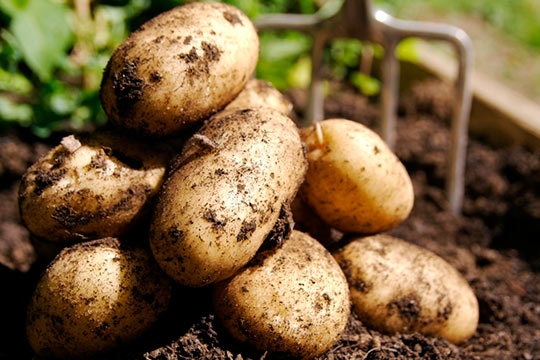
Extraction: Sodium Levulinate is a 100% natural preservative obtained from starch and vegetal inulin.
Benefits: It is a gentle preservative proved to be able to control microorganism colonies without altering the integrity, colour or pH of other ingredients included in the final product. It is especially used in the preservation of fresh ingredients.
Extraction: natural polysaccharide of high natural weight derived from the fermentation of carbohydrates such as glucose or corn syrup.
Benefits: it is used as a binder, emulsion stabilizer and skin conditioning agent in a wide variety of cosmetics and personal care products. 1% of xanthan gum is used for cosmetic formulations.

Extraction: Levulinic Acid is a 100% natural preservative obtained from the degradation of cellulose.
Benefits: it is a mild preservative that control colonies of microorganisms without altering the integrity, colour or pH of the other ingredients included in the product. It has very good antibacterial properties.
Extraction: arginine is an amino acid obtained by biofermentation. It is one of the main components of hair keratin. Acts as a source of nitrogen for proper cell function, generating a vasodilator effect that improves blood circulation.
Benefits: used in many formulas as a natural stabiliser, much safer than conventional alkaline agents, it is known for its effectiveness in fighting hair loss. It is biodegradable.
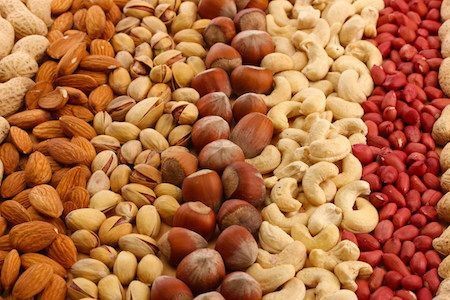
Extraction: tocopherol or vitamin E, is naturally found in vegetable fats and oils, cereals, nuts and green and yellow leafy vegetables.
Benefits: it is used in cosmetics for its antioxidant properties and also acts as a skin conditioning agent. Reduces the appearance of stretch marks, helps improve skin tone, moisturizes and helps keep skin firm. For hair care, Holy Basil helps improve the blood circulation in the scalp which stimulates hair growth and helps to condition hair and provide shine.
Extraction: benzoic acid salt that is naturally found in blueberries, prunes, cinnamon and apple.
Benefits: it is used as a cosmetic preservative to prevent the growth and proliferation of fungi and bacteria in the products.

Obtaining: Natural perfume that combines the vibrant freshness of orange and peach with the sweet and youthful touch of bubblegum and melon. The warm vanilla at the base creates a soft and long-lasting fragrance, perfect for those seeking energy and sweetness in every use.
Benefits: Provides a refreshing and vibrant scent. This natural perfume is used in the Vitamin C Concentrate Serum.

Extraction: this is a polyglycerin ester consisting of an average of 10 units of lauric acid and glycerol.
Benefits: it is used as an emulsifier, surfactant and skin conditioner. It also serves as a solubiliser of perfumes and essential oils.
Extraction: gluconic acid ester obtained via bio-fermentation.
Benefits: a composed of multiple hydroxyl groups that attract water, leading to increased skin hydration. In other words, it acts as a humectant.
Extraction: citric acid is a weak organic acid found in fruits such as lemons and oranges. Lemon juice contains approximately 5-8% citric acid.
Benefits: citric acid and its salts: Diammonium, Potassium and Sodium help to preserve cosmetics since they are metal chelating agents. Citric acid and its salts are also added to cosmetics to help regulate the acid / base levels. Functions as a powerful antioxidant and helps to regulate and maintain skin’s hydration and elasticity.
Extraction: fatty acid from vegetable origin. Beta-Sitosterol is naturally produced in many fruits, vegetables, nuts and seeds. It is similar to cholesterol, which occurs naturally in the skin and is considered part of the intercellular matrix of the skin.
Benefits: it provides a lot of hydration and acts as an anti-inflammatory agent.

Extraction: sodium chloride is obtained from the mineral halite and is commonly known as table salt. It is a mineral essential for all biological organisms and is found in most tissues and body fluids.
Benefits: it is used to give flavour and to thicken the aqueous portion of beauty care products.

Extraction: Calcium salt from gluconic acid.
Benefits: It is used as a skin humectant and conditioning agent in cosmetic formulations.

Extraction: it is a monoterpene of natural origin that is found in many citrus fruits such as lemon. It is a colorless liquid with a light, fresh and sweet citrus aroma.
Benefits: widely used to make fragrances and flavors. It is a main component of many essential oils.

Extraction: monoterpene with floral aroma and a touch of menthol. This natural fragrance, is sweet and smooth. It is produced by a wide variety of plants such as mint, cinnamon, citrus fruits and birch trees.
Benefits: widely used to make fragrances and flavors. It is a main component of many essential oils.

Extraction: Aloe Vera is a perennial plant native to warm climates. The gel contained in its leaves is commonly used in skin treatments due to its many beneficial properties.
Benefits: Known as an astringent, this plant also has moisturizing, regenerating, rejuvenating and antibacterial properties. These properties are perfect for revitalizing skin. It also functions as a deep cleansing agent, opening pores and eliminating toxins that cause the disruptions in the skin’s normal functioning. It also benefits the hair by restoring shine and helping to eliminate excess dandruff and scalp irritations. It is used especially effective for treating skin irritations, blemishes and acne.
Extraction: water is an element present in most cosmetic products and is the most important raw material. In the cosmetics industry, purified water is used in a process to eliminate any solid particle that may contain water in order to achieve a higher degree of purity and quality.
Benefits: water helps to cleanse the body. Hydrates and improves the effect of other active ingredients, provides softness and delays premature aging of the skin.
Extraction: a vegetable ingredient obtained from coconut.
Benefits: presents a high level of biocompatibility with skin and therefore has the ability to penetrate deep and help skin to repair itself. It acts as an emollient and provides skin with incredible softness.
Extraction: it is harvested from plants (soy or coconut oil for example) by hydrolysis of fats and by fermenting sugars. Glycerol is found naturally in skin and is considered a self-healing compound.
Benefits: it is one of the many substances in the skin that helps maintain the outer barrier and prevents dryness and peeling. It leaves skin feeling nourished and works to treat acne. It also prevents the accumulation of fat and improves the appearance of hair. Vegetable glycerin can be used as a diluent and as an alcohol substitute when preparing herbal extracts.
Obtención: El aceite de almendras está compuesto por grasas monoinsaturadas (grasas saludables que se encuentran en alimentos de plantas), ácido oleico y ácidos linoleicos (como el Omega 3 y 6). El color es casi transparente, con toques amarillos o dorados, no tiene un aroma muy fuerte.
Beneficios: Actúa como estimulante en la formación de colágeno y elastina dando firmeza y elasticidad a los tejidos. Mejora y previene las arrugas y las estrías, de ahí que el aceite de almendras sea recomendado en diversos tratamientos anti-celulitis. Es antiinflamatorio, reparador y cicatrizante, protege la barrea cutánea, frena el envejecimiento y protege de los rayos UV, contiene vitamina E.
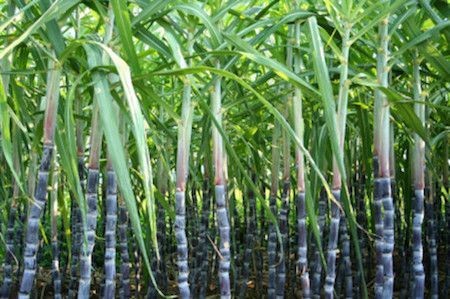
Extraction: 100% natural ingredient obtained from sugarcane and approved by Ecocert. It is biodegradable, making it the perfect natural alternative to petroleum glycols.
Benefits: it is used in cosmetics as a moisturizing agent, solvent and emollient. Its sensory properties help reduce skin irritations. They also control viscosity.
Extraction: mixture of cetyl and stearic alcohols that are produced naturally in plants.
Benefits: these alcohols have the ability to prevent emulsions from separating between their oily and watery parts. These ingredients are also used to alter the thickness of liquid products, to increase foam capacity or to stabilize them.

Sourcing: of plant origin – from sugar – it’s a mixture of esters of stearic acid and sucrose.
Benefits: It has high biocompatibility with our skin, which is why it has the ability to penetrate. It acts as an emollient and leaves the skin feeling soft.

Extraction: natural pentylene glycol is obtained from renewable plant-based sources such as sugar cane or maize.
Benefits: commonly used in moisturising creams and lotions for its hydrating properties, which help retain moisture in the skin. It also has antibacterial and preservative effects, helping other active ingredients act better on the skin.
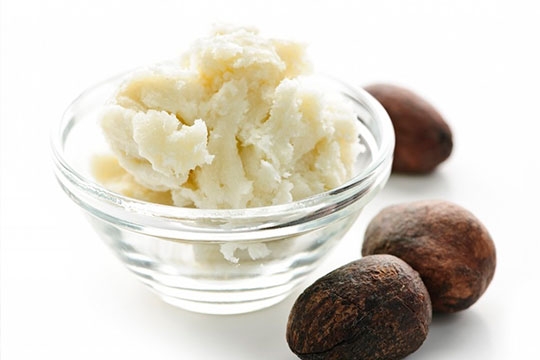
Extraction: it is harvested from the fruit of the African Shea tree (Vitellaria paradoxa) and provides numerous benefits to the skin and hair thanks to its rich composition vitamins (A, D, E and F) and minerals.
Benefits: illuminates skin and hair, and provides additional hydration and elasticity. It is an excellent cell regenerator that offers intense hydration and long-lasting nutrition. It also acts as a natural sunscreen by combating UVA and UVB rays. It provides healing, properties and provides protection against cold weather damage.
Extraction: jojoba oil is extracted from the jojoba (Simmondsia chinensis) nut (seed). Actually, it functions more like a wax that is liquid at room temperature than an oil. 96% of its composition consists of ceramides.
Benefits: highly moisturizing and nourishing. Ceramides cover the cells of the epidermis and to help regulate and intensify hydration. They are very similar to human skin, which is why they are absorbed and act quickly and are not oily to the touch. Jojoba oil also contains linoleic acid which is a very effective at restructuring and regenerating natural skin. Its vitamin E content also helps to rejuvenate skin and provides defence against free radicals. In addition, it is ideal for oily and acne-prone skin because it absorbs accumulated sebum and helps minimise breakouts.
Extraction: derived from Coconut Oil and Glycerin, is considered an excellent emollient and skin repairing agent. It is a mix of fatty acids. It is not considered a sensitizing agent.
Benefits: it repairs the surface of the skin and prevents the loss of moisture and also works to thicken skin. They are neutral oils that do not irritate the skin, are easy to apply and are quickly absorbed.
Extraction: cranberries grow from a shrub half a meter in height that produces dark, bluish or reddish berries. It is classified as a super fruit for its high rich antioxidant and nutritional properties.
Benefits: cranberries nurture the skin and are rich in both vitamin B and C. It are also rich in antioxidant polyphenols that work to combat the oxidative damage caused by solar radiation. They are a powerful rejuvenator that reduces the appearance of wrinkles and also improves the formation of collagen.

Origin: It is a mineral.
Benefits: Increases protein synthesis and improves phosphate transport in the skin. Visibly improves skin texture and reduces wrinkles.

Origin: It is a mineral.
Benefits: Neutralises free radicals, combating skin ageing and contributes to skin regeneration, thus preventing the loss of elasticity, firmness and luminosity, preventing the appearance of wrinkles and expression lines.

Extraction: salicornia is a coastal plant of incredible adaptability. It is able to live in soils with very variable salt contents thanks to the presence of water carriers and agents that protect it from dehydration.
Benefits: it favours the storage and transport of water and urea through the epidermis. It also increases the action of enzymes involved in the production of lipids in skin. These two actions produce an instant moisturising effect on all skin types.

Extraction: tall herbaceous plant with pink and lilac toned flowers. This plant is cultivated under xeric conditions, in regions with low humidity, in order to stimulate the plant’s adaptogenic mechanisms of which improve its ability to retain water. The essential oil is distilled from the bark, twigs and leaves of the salvia plant.
Benefits: this ingredient acts a moisturizer by decreasing the loss of transcutaneous water. It has astringent properties and helps to balance out oily, mixed or acne prone skin. This plant is rich in vitamin C, which helps fight free radicals and the signs of premature aging.

Origin: A mineral.
Benefits: Promotes the synthesis of collagen, elastin and ATP and also promotes the production of glycosaminoglycans (scientific studies support that these peptides reduce damage to collagen and elastin fibres).

Extraction: it is a polysaccharide composed of glucose monomers which are produced by the filamentous bacterium Sclerotium rolfssii via fermentation processes.
Benefit: it is a very versatile ingredient that improves the texture of cosmetic products. It is used as a thickening agent and has a gel texture. It also acts as a natural moisturizer and works to soften skin.
Extraction: fatty alcohol obtained from coconut, therefore it is natural harvested.
Benefits: it is used as emollient, emulsifier, thickener and conductor for other ingredients in cosmetic solutions. It also works to allow the product more coverage and to be easily spread and blended into skin.

Extraction: lysolecithin is obtained from lecithin via biotechnological processes. Lecithin is a by-product of the food engineering that comes from soybean oil.
Benefits: it is an emulsifying agent capable of stabilizing oil-water (O / W) emulsions. It allows other active ingredients to enter the skin without altering the dermal barrier’s lipid structure. It is moisturizing, nourishing and non-greasy.

Extraction: organic hyaluronic acid of vegetable origin. It is found naturally in the skin so the application of this acid will not irritate or damage it.
Benefits: increases skin’s hydration and provides firmness and elasticity. Penetrates skin deep down with its anti-aging action.

Extraction: natural polysaccharide produced by the fungus Aureobasidium.
Benefit: it is used in cosmetics for its powerful firming and anti-wrinkle properties. Produces a filmogenic effect, softening skin and hair.

Sourcing: Natural, extracted from trees, seaweed or mushrooms.
Benefits: Moisturises, strengthens the skin barrier and regulates scalp desquamation.
Sourcing: vegetable, obtained from soya pods.
Benefits: lipids, very similar to those in the skin's lipid barrier, helps skin regeneration.
Sourcing: Ascorbyl glucoside is the result of the union of a sugar molecule (glucose) with a vitamin C molecule (ascorbic acid) by means of an enzymatic reaction, thus managing to protect the -OH group from oxidation. Obtained by a biotechnological process.
Benefits: It is a natural derivative of vitamin C, which has the same functions as ascorbic acid but without the disadvantages, it is a more stable molecule and is suitable for sensitive skin. It acts as a depigmenting antioxidant and promotes collagen synthesis to reduce wrinkles and expression lines.
Extraction: it is obtained from the first cold pressing of olives, from which the unsaponifiable fraction is later separated.
Benefits: one of the most prestigious oils of the Mediterranean not only in gastronomy, but also in cosmetic. This oil has repairing properties, combats skin dryness by including a large amount of natural fatty acids in its composition. It is also rich in vitamins E and K.
Perfume
Extraction: natural polysaccharide of high natural weight derived from the fermentation of carbohydrates such as glucose or corn syrup.
Benefits: it is used as a binder, emulsion stabilizer and skin conditioning agent in a wide variety of cosmetics and personal care products. 1% of xanthan gum is used for cosmetic formulations.

Extraction: Sodium Levulinate is a 100% natural preservative obtained from starch and vegetal inulin.
Benefits: It is a gentle preservative proved to be able to control microorganism colonies without altering the integrity, colour or pH of other ingredients included in the final product. It is especially used in the preservation of fresh ingredients.

Extraction: tocopherol or vitamin E, is naturally found in vegetable fats and oils, cereals, nuts and green and yellow leafy vegetables.
Benefits: it is used in cosmetics for its antioxidant properties and also acts as a skin conditioning agent. Reduces the appearance of stretch marks, helps improve skin tone, moisturizes and helps keep skin firm. For hair care, Holy Basil helps improve the blood circulation in the scalp which stimulates hair growth and helps to condition hair and provide shine.
Extraction: benzoic acid salt that is naturally found in blueberries, prunes, cinnamon and apple.
Benefits: it is used as a cosmetic preservative to prevent the growth and proliferation of fungi and bacteria in the products.

Extraction: this is a polyglycerin ester consisting of an average of 10 units of lauric acid and glycerol.
Benefits: it is used as an emulsifier, surfactant and skin conditioner. It also serves as a solubiliser of perfumes and essential oils.
Extraction: Lactic acid is obtained from the natural fermentation of sugars and is used to adjust the pH of cosmetic products due to its acidic nature.
Benefits: This ingredient allows cosmetics to be milder for skin and hair.

Extraction: sodium salt from phytic acid, a vegetable compound found in corn.
Benefits: it is used in cosmetic products as a chelating agent to prevent the heavy metals.
Extraction: is the potassium salt of sorbic acid that occurs naturally in mountain berries (Sorbus aucuparia).
Benefits: acts as a preservative, protecting cosmetics from deterioration by preventing or delaying the growth and reproduction of microorganisms. This compound is easily metabolized by the body and produces water and CO2, therefore it is completely harmless.
Extraction: gluconic acid ester obtained via bio-fermentation.
Benefits: a composed of multiple hydroxyl groups that attract water, leading to increased skin hydration. In other words, it acts as a humectant.
Extraction: extracted from the freshwater microalga Haematococcus pluvialis. It is the primary food source for flamingos, salmon and prawns, hence their characteristic reddish color.
Benefits: it is the most powerful antioxidant that exists in nature. It has antioxidant power 1,000 times stronger than that of Coenzyme Q10 and 65 times stronger than Vitamin C. This carotenoid is used for repairing skin damage and to prevent premature ageing. It is a natural anti-inflammatory, promotes hydration and protects against solar radiation.

Extraction: Sodium Anisate is a 100% natural preservative obtained from anise and fennel.
Benefits: It is a gentle preservative proved to have a great mitotic inhibitor activity without altering the integrity, colour or pH of other natural ingredients included in the final product. It is especially used in the preservation of fresh ingredients.
Extraction: citric acid is a weak organic acid found in fruits such as lemons and oranges. Lemon juice contains approximately 5-8% citric acid.
Benefits: citric acid and its salts: Diammonium, Potassium and Sodium help to preserve cosmetics since they are metal chelating agents. Citric acid and its salts are also added to cosmetics to help regulate the acid / base levels. Functions as a powerful antioxidant and helps to regulate and maintain skin’s hydration and elasticity.

Extraction: Calcium salt from gluconic acid.
Benefits: It is used as a skin humectant and conditioning agent in cosmetic formulations.
Extraction: safflower is a herbaceous plant of the Asteraceae family. The oil obtained from the cold pressing of its seeds is used as food and natural colouring.
Benefits: it contains a high concentration of linoleic acid and vitamin K, which help to treat irritated or tired skin. It is a dry oil, which penetrates quickly into the skin, hydrating it without greasing it.

Extraction: silicon dioxide (SiO2), commonly known as silica, is a main component of sand. It is a mineral obtained via the purification of quartz.
Benefits: works in cosmetics products as a thickening agent with an amorphous structure. It is also used as an anti-agglomerate or absorbent.

Extraction: sodium chloride is obtained from the mineral halite and is commonly known as table salt. It is a mineral essential for all biological organisms and is found in most tissues and body fluids.
Benefits: it is used to give flavour and to thicken the aqueous portion of beauty care products.

Extraction: menthol is an alcohol that is extracted from peppermint essential oil. Peppermint is considered the most precious of the mints.
Benefits: helps restore natural pH levels that are deteriorated via the use of conventional shampoos. It offers a delicate and deep cleaning action while removing grease without damaging the hair. It also strengthens hair follicles, refreshes and prevents scalp irritations. It provides both soothing and refreshing properties.
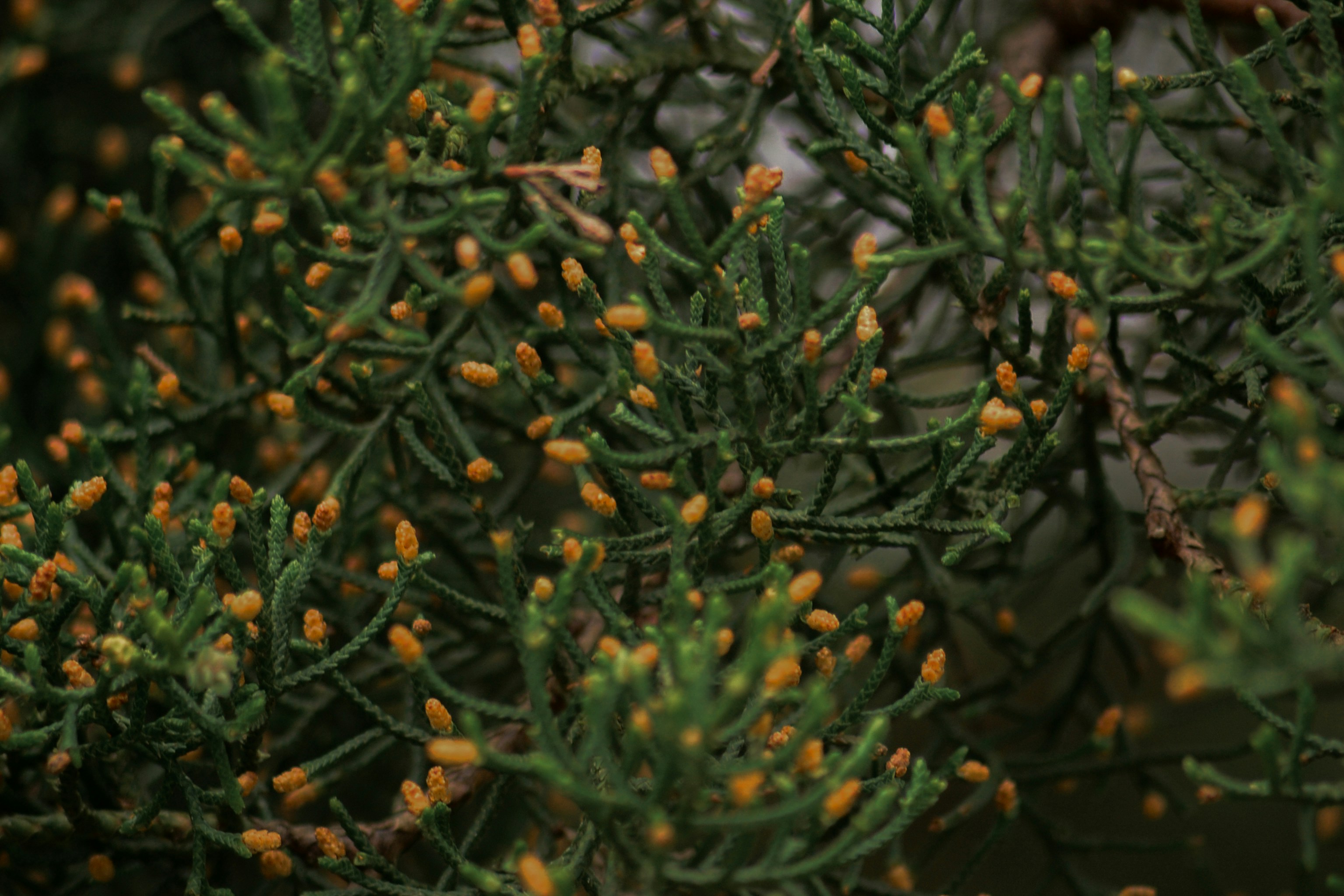
Obtaining: Pinene is a natural compound mainly obtained from essential oils derived from pine resins and needles, as well as from other aromatic plants such as rosemary and eucalyptus.
Benefits: In cosmetics, pinene provides antioxidant, soothing, and antimicrobial properties. Its use enhances the formulation of skin and hair products, helping to revitalize, protect, and calm, while also offering freshness and a natural aroma.

Obtaining: Eucalyptus oil is obtained from the fresh leaves of the Eucalyptus globulus tree. It is extracted through steam distillation, which isolates its volatile components, with eucalyptol being the main constituent.
Benefits: It has an intense, fresh, camphoraceous, and slightly balsamic aroma, very characteristic and revitalising. In cosmetics and personal care, it is used for its purifying, refreshing, and decongestant properties. It is also attributed with antimicrobial and deodorant effects, making it a functional ingredient in products with toning and revitalising action.

Obtaining: it is obtained from the peel of the fruit of the Citrus aurantium tree, also known as the bitter orange tree, typical of Mediterranean countries.
Benefits: this essential oil is used in perfumes for its fresh and citrusy aroma, and is common in skincare and aromatherapy for its calming and relaxing properties.
Extraction: this essential oil is obtained from the lemon, an acidic citrus fruit high in vitamins, especially in vitamin C.
Benefits: purifies oily skin, opens clogged pores and improves acne-prone skin. Like many scented oils, lemon oil has antioxidant and calming properties which benefit the skin. It also provides benefits on the hair: it increases capillary resistance prevents the scalp from over drying and treats dandruff.

Obtaining: Terpineol is an organic compound from the monoterpene family, naturally found in essential oils of various plants, such as pine, lavender, eucalyptus, and orange.
Benefits: It is known for its pleasant floral and slightly citrus aroma, and it has relaxing, antioxidant, and antimicrobial properties.

Extraction: it is a monoterpene of natural origin that is found in many citrus fruits such as lemon. It is a colorless liquid with a light, fresh and sweet citrus aroma.
Benefits: widely used to make fragrances and flavors. It is a main component of many essential oils.

Extraction: monoterpene with floral aroma and a touch of menthol. This natural fragrance, is sweet and smooth. It is produced by a wide variety of plants such as mint, cinnamon, citrus fruits and birch trees.
Benefits: widely used to make fragrances and flavors. It is a main component of many essential oils.

Obtaining: Vanillin is an aromatic organic compound that is responsible for the characteristic flavor and aroma of vanilla. It is naturally found in the pods of the vanilla plant.
Benefits: It is used in the production of fragrances and cosmetic products due to its pleasant aroma and antioxidant properties.
Thousands of people discover Freshly thanks to reviews like yours. Also, share your experience on Trustpilot and help us grow together.
SHARE ON TRUSTPILOTReviews like yours help us improve every day. Our team will review your case to assist you.
⚠️ The comment could not be added.
How can I use it?
-
Apply the Vitamin C serum and cream to your face, morning and night, on completely clean and dry skin.
-
Shake the products well before use to mix their natural ingredients.
-
With the help of the dropper, apply 4 drops of the Vitamin C Concentrate Serum across your forehead, cheeks, and chin.
-
Gently spread the product over your entire face, lightly massaging to help the active ingredients penetrate deeply and for the product to be fully absorbed.
-
Next, distribute a small amount of the Vitamin C Moisturising Cream over your face and gently massage, always moving from the inside outwards.
-
TIP! Proper cleansing is essential for healthy skin. If you don't have a product that cleanses deeply without irritation, we recommend the Rose Quartz from Freshly below.
INCI (Ingredients List)
Vitamin C Energy Pack
*Ingredients from organic farming
**Derived from natural essential oils
INCI (Ingredients List) Vitamin C Concentrate Serum:
Aloe Barbadensis Leaf Juice Powder * , Aqua , Glycerin , Pentylene Glycol , Saccharomyces/Xylinum/Black Tea Ferment , Coco-Caprylate/Caprate , Simmondsia Chinensis Seed Oil , Elaeis Guineensis Oil , Sucrose Distearate , Gossypium Herbaceum Seed Oil , Hydrolyzed Hyaluronic Acid , Sodium Hyaluronate , Oryza Sativa Starch , Prunus Amygdalus Dulcis Oil * , Linum Usitassimum Seed Oil * , Astaxanthin , Carthamus Tinctorius Seed Oil , Ascorbyl Glucoside , Bidens Pilosa Extract , Vaccinium Vitis-Idaea Fruit Extract , Helianthus Annuus Seed Oil , Prunus Persica Juice , Phosphatidylcholine , Terminalia Ferdinandiana Fruit Extract , Mannitol , Sucrose Stearate , Glycine Soja Oil , Cetyl Alcohol , Squalene , p-Anisic Acid , Sodium Gluconate , Sodium Levulinate , Xanthan Gum , Levulinic Acid , Arginine , Tocopherol , Sodium Benzoate , Parfum , Polyglyceryl-10 Laurate , Gluconolactone , Citric acid , Beta-Sitosterol , Sodium Chloride , Calcium Gluconate , Limonene ** , Linalool **
INCI (Ingredients List) Vitamin C Moisturising Cream:
Aloe Barbadensis Leaf Juice Powder * , Aqua , Coco-Caprylate/Caprate , Glycerin , Prunus Amygdalus Dulcis Oil , Propanediol , Cetearyl Alcohol , Sucrose Polystearate , Pentylene Glycol , Butyrospermum Parkii Butter , Simmondsia Chinensis Seed Oil , Caprylic / Capric Triglyceride , Vaccinium Vitis-Idaea Fruit Extract , Magnesium Aspartate , Zinc Gluconate , Salicornia Herbacea Extract , Salvia Sclarea Extract , Copper Gluconate , Sclerotium Gum , Cetyl Alcohol , Lysolecithin , Sodium Hyaluronate , Pullulan , Mannitol , Phosphatidylcholine , Ascorbyl Glucoside , Olea Europaea Oil Unsaponifiables , Parfum , Xanthan Gum , Sodium Levulinate , Tocopherol , Sodium Benzoate , Polyglyceryl-10 Laurate , Lactic Acid , Sodium Phytate , Potassium Sorbate , Gluconolactone , Astaxanthin , Sodium Anisate , Citric acid , Calcium Gluconate , Carthamus Tinctorius Seed Oil , Silica , Sodium Chloride , Menthol , PINENE , Eucalyptus oil , Citrus Aurantium Peel Oil ** , Citrus Limon Peel Oil , Terpineol , Limonene ** , Linalool ** , Vanillin
At Freshly, we're constantly innovating and improving our formulas. That’s why the list of ingredients is updated regularly and may differ slightly from the label on the product depending on the time of purchase.
What don’t we include and why?
Thousands of ingredients are left out of our formulas: parabens, silicones, sulfates, phthalates, plastic particles… Start a routine free from irritants, pollutants, animal-derived ingredients, or anything associated with adverse effects. We only include nutrients that bring real value to your skin's health.











